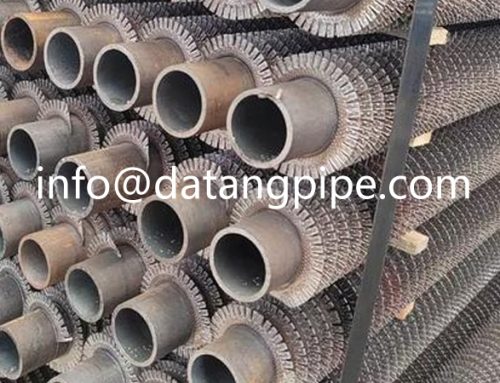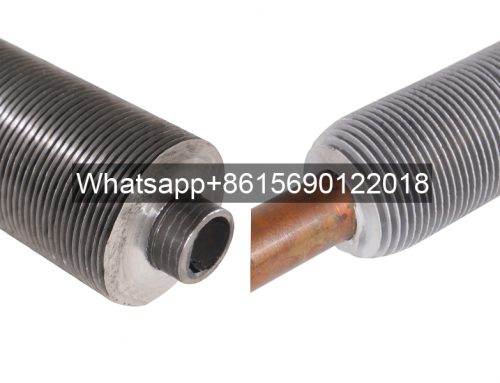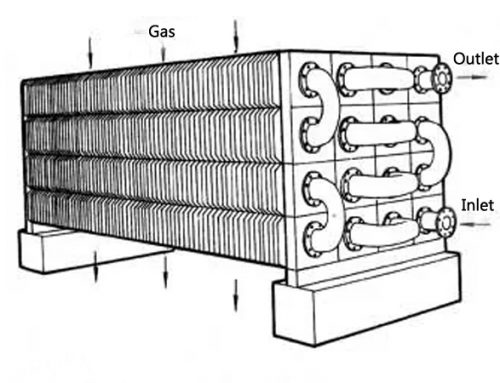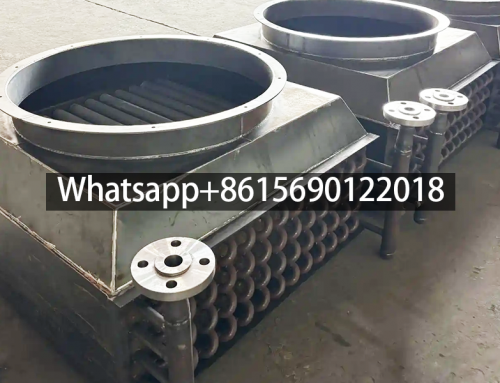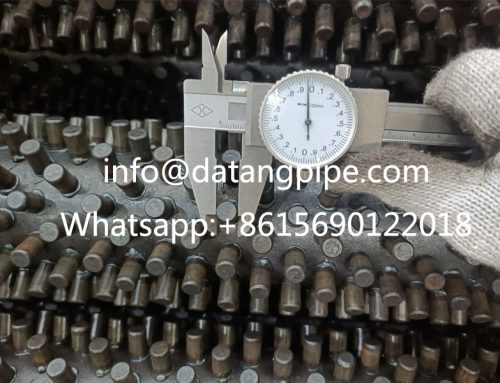Difference Between Laser Welded Fin Tubes and High Frequency Welded Fin Tubes
Laser welded fin tubes and high frequency welded fin tubes are two types of fin tubes widely used in the field of heat exchange. They have significant differences in manufacturing process, performance characteristics, application scenarios, etc. This article will explore the differences between the two fin tubes in detail so that readers can make wise decisions when choosing fin tubes.

1. From the perspective of manufacturing process, laser welded fin tubes and high frequency welded fin tubes are essentially different.
Laser welded fin tubes use high-energy laser beams as heat sources to weld fins and tube bodies together through precise laser welding technology. During the welding process, the high temperature generated by the laser beam instantly melts the contact surface between the fins and the tube body, and then forms a strong weld during the solidification of the molten pool.
Due to the advantages of high energy density, small heat affected zone, and fast welding speed, laser welded fin tubes have the characteristics of good weld quality, high strength, and strong corrosion resistance. In addition, laser welding technology can achieve precise control of welding parameters, ensure stable and reliable weld quality, reduce smoke and harmful gas emissions, and have little impact on the environment.
High-frequency welded fin tubes generate induced current through high-frequency current passing through the workpiece, so that the workpiece is locally heated to a molten state, and then welded under pressure. This welding method is fast, has low contact thermal resistance, small wrinkles, is not easy to accumulate dust, and can be used for welding carbon steel and stainless steel.
The manufacturing process of high-frequency welded fin tubes is relatively simple, with high production efficiency and relatively low cost. However, compared with laser welding, the heat-affected zone of high-frequency welding is larger, the appearance of the weld may not be as delicate as that of laser welding, and may be slightly insufficient under certain extreme conditions.
2. In terms of performance characteristics, there are also significant differences between laser-welded fin tubes and high-frequency welded fin tubes.
Laser-welded fin tubes have higher strength and corrosion resistance due to the use of high-precision laser welding technology, high weld quality, and small heat-affected zone. This enables laser-welded fin tubes to show better stability and durability in high temperature, high pressure and corrosive environments.
No filler materials such as welding wire need to be added during laser welding, which reduces production costs and improves production efficiency. Due to the good quality of the weld, the heat exchange efficiency of laser welded fin tubes is often better than that of high-frequency welded fin tubes, reducing heat loss and fluid resistance.
Although high-frequency welded fin tubes can also meet the use requirements under general working conditions, they may be slightly inferior to laser welded fin tubes in terms of heat exchange efficiency, corrosion resistance and durability. However, high-frequency welded fin tubes also have their unique advantages.
For example, high-frequency welded fin tubes have a simple manufacturing process, high production efficiency and relatively low cost, so they are more competitive in some occasions with certain cost requirements. In addition, high-frequency welded fin tubes have good dry and wet performance and corrosion resistance, can cope with wet and dry working conditions, and are not easy to rust.
High-frequency welded fin tubes also have a lightweight design and compact structure, which is easy to install and transport, and can achieve a large amount of heat transfer area in a limited space, improving the effect of heat exchange.
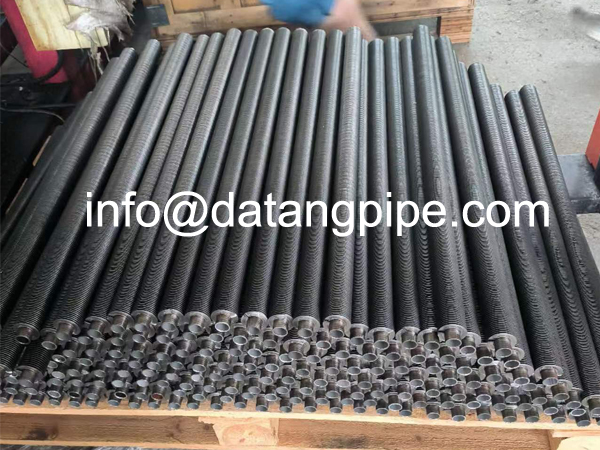
3. In terms of application scenarios, laser welded fin tubes and high-frequency welded fin tubes also have their own focus.
Laser welded finned tubes are more suitable for application scenarios that require high efficiency, high stability and long life due to their excellent performance and stability.
For example, in heating systems, waste heat recovery, chemical plants and various industrial boilers, laser welded finned tubes can play a more efficient and environmentally friendly role. In addition, in some occasions with extremely high requirements for weld quality, such as aerospace, medical equipment and other fields, laser welded finned tubes are also more advantageous.
High-frequency welded finned tubes are more suitable for applications under general working conditions. For example, in agriculture, industry and greenhouses, high-frequency welded finned tubes have been widely used for their high efficiency in heat transfer and low cost. In addition, in some occasions with certain cost requirements, such as small heat exchangers, cooling towers and other equipment, high-frequency welded finned tubes are also more competitive.
When comparing the heat transfer performance of the two finned tubes, we can find that laser welded finned tubes have obvious advantages in heat exchange efficiency.
Since laser welding can form high-quality welds and reduce heat loss and fluid resistance, laser welded finned tubes are often superior to high-frequency welded finned tubes in heat exchange efficiency. Especially in high temperature, high pressure and corrosive environments, laser welded fin tubes can show better stability and durability. This advantage makes laser welded fin tubes more competitive in application scenarios that require high efficiency, high stability and long life.
When choosing the type of fin tube, in addition to considering the heat transfer performance, the use performance and long-term maintenance cost should also be considered comprehensively.
Although the initial investment of high-frequency welded fin tubes may be low, the maintenance cost under high load or harsh working conditions may be relatively high. Due to its excellent performance, laser welded fin tubes reduce the number of replacements and maintenance caused by corrosion, fatigue and other reasons, thereby reducing the overall maintenance cost. Therefore, when choosing the type of fin tube, comprehensive consideration should be given to the needs, budget and long-term operation planning of the specific project.
We should also pay attention to the impact of the manufacturing process differences of the two fin tubes on the heat transfer performance.
The high-frequency welding process is simple and has high production efficiency, but compared with laser welding, its heat-affected zone is larger, and the appearance of the weld may not be as delicate as that of laser welding. Laser welding technology can achieve high-precision and high-speed welding, with a small heat-affected zone, narrow and deep welds, and beautiful appearance. These process characteristics directly affect the heat transfer performance and durability of the finned tube.
There are significant differences between laser welded finned tubes and high-frequency welded finned tubes in terms of manufacturing process, performance characteristics, and application scenarios.
High-frequency welded finned tubes have the advantages of simple process, high production efficiency, and low cost, and are suitable for applications under general working conditions. Laser welded finned tubes, on the other hand, show better performance in terms of heat exchange efficiency, corrosion resistance and durability, and are suitable for application scenarios that require high efficiency, high stability and long life.
When choosing the type of finned tube, comprehensive consideration should be given to the needs, budget and long-term operation planning of the specific project.
With the continuous advancement of industrial technology and the further reduction of manufacturing costs, high-frequency welded and laser welded finned tubes are expected to be applied and promoted in a wider range of fields.
In the future, these two types of finned tubes are expected to play a more efficient and environmentally friendly role in heating systems, waste heat recovery, chemical plants and various industrial boilers, bringing more efficient solutions to industrial manufacturing and energy utilization.
We also look forward to more innovative fin tube manufacturing processes and technologies emerging in the future to meet the needs of different application scenarios and promote the continuous progress and development of industrial manufacturing.


